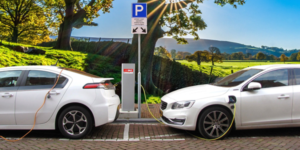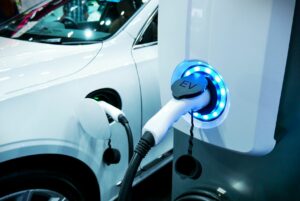The United States is experiencing a wave of state-led clean transportation initiatives that are gaining substantial momentum. Faced with insufficient federal action, states started focusing their efforts on the sector that produces the largest percentage of greenhouse gas: transportation. On November 10, 2020, the Environmental Law Institute and Babst Calland co-hosted a webinar that explored these initiatives, their potential impact, and funding sources. Click here for a transcript of the discussion, which has been edited for style, clarity, and space considerations.
On January 15, 2020, the California Air Resources Board (CARB) announced the opening of the reporting system for the Large Entity One-Time Reporting Requirement for vehicle fleet owners. This reporting requirement was passed by CARB as part of its June 2020 adoption of the Clean Trucks Rule. As the California Office of Administrative Law (OAL) has not yet approved the regulation, businesses may voluntarily provide information at this time if they wish to begin the reporting process ahead of the April 1, 2021 deadline.
Please read more about this reporting requirement in this Alert.
 On November 10th, two Babst Calland attorneys, Julie Domike and Gina Falaschi, will participate in an Environmental Law Institute (ELI) and Babst Calland co-sponsored webinar entitled “State Clean Transportation Initiatives: Stepping Towards Success for High EV Adoption.” They will be joined by Colorado State Senator Chris Hansen, Jim Chen, Vice President of Public Policy at Rivian, and Matt Nelson, Director of Government Affairs at Electrify America, in a discussion of 2020’s most important state-led clean transportation initiatives, their goals and impacts, as well as funding sources for such efforts. The panel will also explore the partnership that state and local governments can forge with industry to facilitate high electric vehicle penetration, charging and grid infrastructure, and direct sales to consumers.
On November 10th, two Babst Calland attorneys, Julie Domike and Gina Falaschi, will participate in an Environmental Law Institute (ELI) and Babst Calland co-sponsored webinar entitled “State Clean Transportation Initiatives: Stepping Towards Success for High EV Adoption.” They will be joined by Colorado State Senator Chris Hansen, Jim Chen, Vice President of Public Policy at Rivian, and Matt Nelson, Director of Government Affairs at Electrify America, in a discussion of 2020’s most important state-led clean transportation initiatives, their goals and impacts, as well as funding sources for such efforts. The panel will also explore the partnership that state and local governments can forge with industry to facilitate high electric vehicle penetration, charging and grid infrastructure, and direct sales to consumers.
The event is open to the public (there is a $50 fee for those who are not members of ELI; Press/Full-Time Students, $0); registration is required by November 6 through the ELI Website.
The State of California has taken another leap to support electric vehicle owners and manufacturers. On August 27th, the California Public Utilities Commission formally approved a plan from investor-owned utility Southern California Edison (SCE) to fund approximately 37,800 electric vehicle charging ports within its service territory. Under the program, known as Charge Ready 2, SCE will install and maintain the charging infrastructure, while program participants will own, operate and maintain qualified charging stations. SCE will also provide rebates to lower the cost of program participation, including an expanded rebate program to support EV charging ports in new multifamily dwellings under construction.

Of the $436-million-dollar budget, $417.5 million will fund the charging infrastructure for Level 1, Level 2, and direct current fast chargers, while the remaining funds will be used for marketing, education, outreach, and evaluation programs. The utility, which provides power to 15 million people across 50,000-square miles of Southern California, has committed to install 50% of these chargers in disadvantaged communities that are often disproportionately impacted by air pollution.
This program expands the Charge Ready Pilot program, which began three years ago, and joins SCE’s Charge Ready Transport, which aims to provide charging to support 8,490 medium- and heavy-duty electric vehicles over the next five years.
The Charge Ready 2 program will benefit current owners of electric vehicles by increasing charging options and possibly enhancing the market for used electric vehicles, making electric vehicles a more affordable option for more consumers. The program will also encourage the purchase of new electric vehicles, which will benefit not only consumers wanting to own an EV, but also manufacturers who must meet their required percentage of zero emission vehicle sales. Under California law, which has also been adopted by several other states under the federal Clean Air Act, manufacturers must produce enough zero emission vehicles to meet the minimum credit requirement, which increases by 2.5% annually. For example, for model year 2020 vehicles, a manufacturer must produce enough zero emission vehicles to have credits equal to 9.5% of the manufacturer’s average fleet sales in model years 2016-2018.
 Significant funding will soon be available in California to support the expansion of zero-emission trucks in the heaviest weight class that has previously relied on diesel engine technologies. On August 18, 2020, California will start to parcel out $27 million in funding from the Volkswagen (VW) Environmental Mitigation Trust program to replace higher polluting trucks with zero-emission vehicles.
Significant funding will soon be available in California to support the expansion of zero-emission trucks in the heaviest weight class that has previously relied on diesel engine technologies. On August 18, 2020, California will start to parcel out $27 million in funding from the Volkswagen (VW) Environmental Mitigation Trust program to replace higher polluting trucks with zero-emission vehicles.
The VW Environmental Mitigation Trust provides about $423 million for California to mitigate the excess nitrogen oxide emissions caused by VW’s use of emissions defeat devices in certain of its diesel passenger vehicles. The trust is a component of partial settlements with VW and provides earmarked funding opportunities for actions like “scrap and replace” projects for the heavy-duty sector, including on-road freight trucks, transit and shuttle buses, school buses, forklifts and port cargo handling equipment, commercial marine vessels, and freight switcher locomotives. As required by the settlement, California developed a Beneficiary Mitigation Plan that was approved by the trustee in June 2018.
As part of the Beneficiary Mitigation Plan, $90 million was made available for the Zero-Emission Class 8 Freight and Port Drayage Trucks category to replace freight trucks (including drayage), waste haulers, dump trucks, and concrete mixers. The first $27 million installment of the total $90 million has been approved and applications for funding will be available on August 18. Eligible applicants will be awarded funding on a first-come, first-served basis.
To qualify, existing vehicles must be powered by engine built in model years 1992 to 2012, in compliance with all applicable regulations, and scrapped in exchange for a zero-emission replacement vehicle certified or approved by the California Air Resources Board or eligible under the Hybrid and Zero-Emission Truck and Bus Voucher Incentive Project. Applicants must be able prove ownership for at least one year, and the old and new vehicles must operate within California at least 75% of the time. Applicants granted an award must submit annual usage reports for the term of the contract.
Maximum funding will not exceed $200,000 per eligible replacement vehicle and funding is available for both public and private entities. Non-government entities, however, may only receive an incentive up to 75% of the cost of the vehicle, while government-owned vehicles are eligible for 100% of the cost up to the $200,000 cap.
VW Environmental Mitigation Trust funding for this and other projects, in California and in many other states, promotes the development of and investment in cleaner transportation technologies and the infrastructure that supports them. While the total $90 million is simply a drop in the bucket when it comes to meeting California’s goal of phasing out diesel trucks completely by 2045 under its newly passed Advanced Clean Trucks regulation, it is a start.
 On November 10th, two Babst Calland attorneys,
On November 10th, two Babst Calland attorneys, 
 Significant funding will soon be available in California to support the expansion of zero-emission trucks in the heaviest weight class that has previously relied on diesel engine technologies. On August 18, 2020, California will start to parcel out $27 million in funding from the Volkswagen (VW) Environmental Mitigation Trust program to replace higher polluting trucks with zero-emission vehicles.
Significant funding will soon be available in California to support the expansion of zero-emission trucks in the heaviest weight class that has previously relied on diesel engine technologies. On August 18, 2020, California will start to parcel out $27 million in funding from the Volkswagen (VW) Environmental Mitigation Trust program to replace higher polluting trucks with zero-emission vehicles.